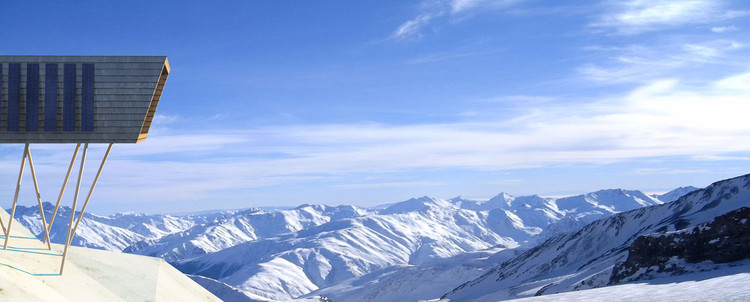
The Eco-Temporary Refuge, designed by Andrea Jasci Cimini of CiminiArchitettura, is a proposal for a residence that can be deployed in mountain landscapes where recreational activities are available for tourists, climbers and hikers. The house comes as a substitute to permanent and invasive construction of housing that endangers the dedicated eco-systems of the mountains to promote this kind of seasonal activity. The zero-impact house is a sustainably-minded endeavor that simultaneously exploits and protects the natural environment.
Read on for more on the project after the break.
The primary objectives of the house are to be self-sufficient, flexible and easily removable. It is built and assembled in a factory and transportable by helicopter. The structure of the house rests on pillars, aimed at making minimal contact and disturbances in the pre-existing conditions of the soil when deploying the house.

The house accommodates up to six people, and is designed to sustain a comfortable environment in cold weather. It is equipped with 4 kW solar panels that power underfloor heating and electrical systems, appliances, and system transformation of snow into drinking water.

The house embraces the snow as a thermal insulation and is used in the sewage treatment of the house, converting it to hot water. Windows are minimal and the glass used has a low-emissivity that has contributes to thermal insulation by trapping warm daytime temperatures in the winter. In the summer, the system works in an opposite way by opening and ventilating the house.

ETR is designed to sustain 2 to 4 flights per year, with the anticipation that mountain rescue helicopters are the most efficient and least invasive way to transport the house from different sites with having to construct roads and transportation lines. The proposal is currently under development, to be used in the mountains 3000 meters above sea-level in the winter, and brought to the valleys in the summer to be used as information points for skier safety.













